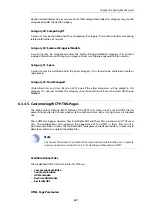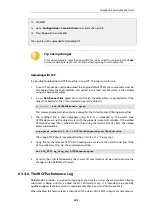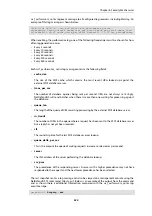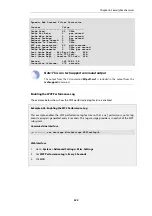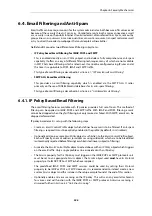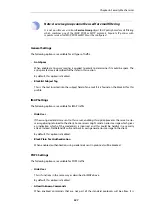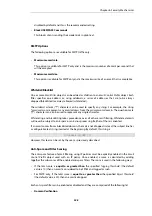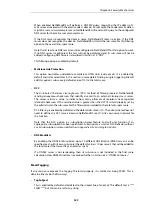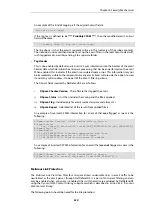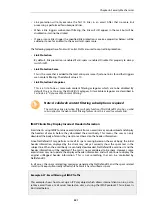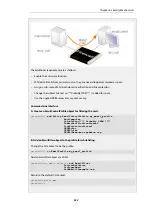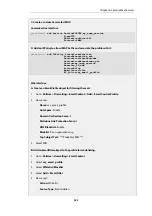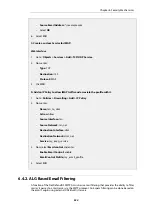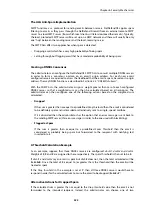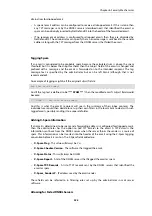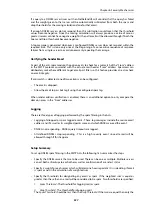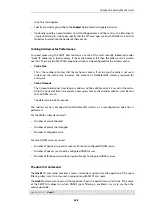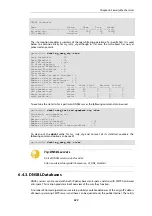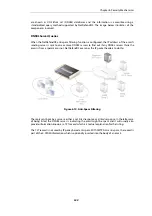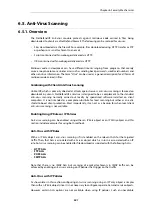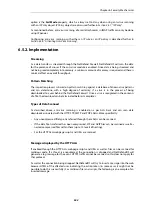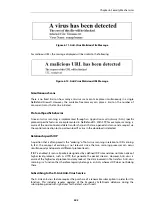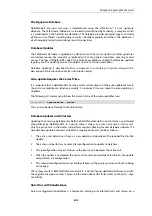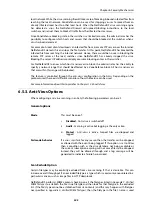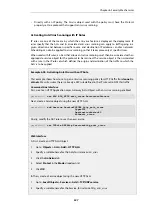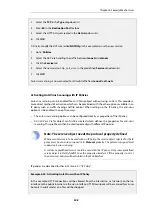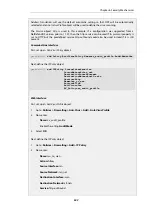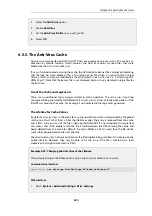
The ALG Anti-Spam Implementation
SMTP functions as a protocol for sending emails between servers. NetDefendOS applies spam
filtering to emails as they pass through the NetDefend Firewall from an external remote SMTP
server to a local SMTP server (from which local clients will later download their emails). Typically,
the local, protected SMTP server will be set up on a DMZ network and there will usually be only
one "hop" between the sending server and the local, receiving server.
The SMTP ALG offers two approaches when spam is detected:
•
Dropping email which has a very high probability of being spam.
•
Letting through but flagging email that has a moderate probability of being spam.
Creating a DNSBL Consensus
The administrator can configure the NetDefendOS SMTP ALG to consult multiple DNSBL servers
in order to form a consensus opinion on an email's origin address. For each new email,
configured servers are queried to assess the likelihood that the email is spam, based on its origin
address. The way DNSBL functions is described in
Section 6.4.3, “DNSBL Databases”
.
With the SNMP ALG, the administrator assigns a weight greater than zero to each configured
DNSBL server so that a weighted sum can then be calculated based on all responses. The
administrator can then configure one of the following actions based on the weighted sum
calculated:
•
Dropped
If the sum is greater than or equal to a predefined
Drop threshold
then the email is considered
to be definitely spam and is discarded or alternatively sent to a single, special mailbox.
If it is discarded then the administrator has the option that an error message is sent back to
the sending SMTP server (this error message is similar to the one used with blacklisting).
•
Flagged as Spam
If the sum is greater than or equal to a predefined
Spam Threshold
then the email is
considered as probably being spam but forwarded to the recipient with notifying text
inserted into it.
A Threshold Calculation Example
As an example, suppose that three DNSBL servers are configured:
dnsbl1
,
dnsbl2
and
dnsbl3
.
Weights of 3, 2 and 2 are assigned to these respectively. The spam threshold is then set to be 5.
If
dnsbl1
and
dnsbl2
say an email is spam but
dnsbl3
does not, then the total calculated will be
3+2+0=5. Since the total of 5 is equal to (or greater than) the threshold then the email will be
treated as spam.
If the
Drop threshold
in this example is set at 7 then all three DNSBL servers would have to
respond in order for the calculated sum to cause the email to be dropped (3+2+2=7).
Alternative Actions for Dropped Spam
If the calculated sum is greater than or equal to the
Drop threshold
value then the email is not
forwarded to the intended recipient. Instead the administrator can choose one of two
Chapter 6: Security Mechanisms
535
Summary of Contents for NetDefendOS
Page 30: ...Figure 1 3 Packet Flow Schematic Part III Chapter 1 NetDefendOS Overview 30 ...
Page 32: ...Chapter 1 NetDefendOS Overview 32 ...
Page 144: ...Chapter 2 Management and Maintenance 144 ...
Page 284: ...Chapter 3 Fundamentals 284 ...
Page 392: ...Chapter 4 Routing 392 ...
Page 419: ... Host 2001 DB8 1 MAC 00 90 12 13 14 15 5 Click OK Chapter 5 DHCP Services 419 ...
Page 420: ...Chapter 5 DHCP Services 420 ...
Page 573: ...Chapter 6 Security Mechanisms 573 ...
Page 607: ...Chapter 7 Address Translation 607 ...
Page 666: ...Chapter 8 User Authentication 666 ...
Page 775: ...Chapter 9 VPN 775 ...
Page 819: ...Chapter 10 Traffic Management 819 ...
Page 842: ...Chapter 11 High Availability 842 ...
Page 866: ...Default Enabled Chapter 13 Advanced Settings 866 ...
Page 879: ...Chapter 13 Advanced Settings 879 ...

